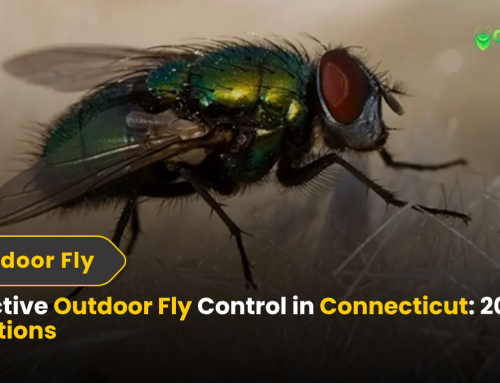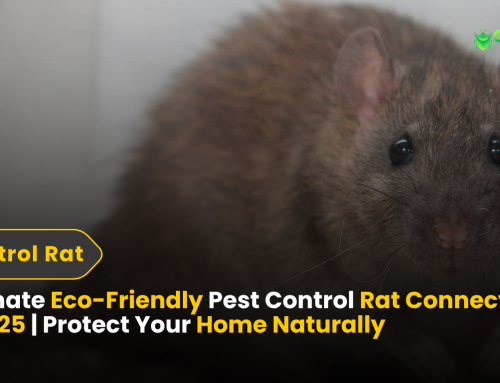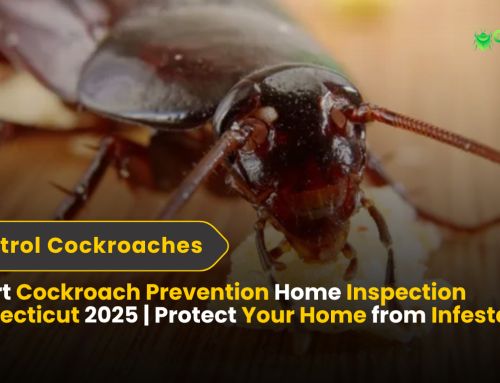Complete Guide to Naturally Removing Indian Meal Moths: 14 Steps for Effective Pest Control
Indian Meal Moths, commonly called pantry moths, are one of the most frequent household pests. They infest a variety of stored foods, including grains, nuts, flour, dried fruits, and pet food, contaminating them with webbing and droppings. Their presence can quickly disrupt your pantry and compromise food safety, leading to waste and frustration.
These pests are known for their rapid reproduction, as female moths can lay hundreds of eggs near food sources. Once hatched, the larvae feed on your pantry staples, creating silk webbing that ruins the food. Adult moths are easy to spot, often flying around kitchen lights or near pantry shelves, signaling an active infestation.
Tackling an infestation requires a thorough understanding of their lifecycle and behaviors. This guide will walk you through 14 effective, all-natural steps to eliminate Indian Meal Moths and prevent their return. From cleaning and decluttering your pantry to using natural repellents and traps, these steps prioritize safety and eco-friendliness. By following these methods, you can successfully protect your food and maintain a pest-free home—all without relying on harmful chemicals. Say goodbye to Indian Meal Moths and restore cleanliness and peace to your kitchen.
Understanding Indian Meal Moths In All The States Of Connecticut
1. Biology and Lifecycle of Indian Meal Moths
Indian Meal Moths progress through four stages: egg, larva, pupa, and adult. The most destructive stage is the larva, as it actively feeds on stored foods like grains, flour, and dried fruits. Females lay hundreds of tiny eggs near food sources, ensuring the larvae have immediate access to nourishment. Once hatched, larvae spin silk webbing that contaminates the food, making it inedible.
Identification of Indian Meal Moths
Adult Indian Meal Moths are small, measuring about ¾ inch in wingspan. They are grayish-brown, with bronze or copper-colored wingtips. You may notice them fluttering around lights or pantry areas. The larvae, cream-colored caterpillars, are the primary cause of food contamination. Pupae are found encased in silky cocoons, often hidden in cracks or food packaging.
Sources of Infestation
Indian Meal Moths often enter homes through contaminated packaged foods, such as flour, grains, or pet food. They can also infiltrate through cracks in walls or poorly sealed doors and windows. Once inside, they spread quickly, making early detection and prevention crucial for managing infestations.
2. Signs of Indian Meal Moth Infestation
1. Webbing
One of the most noticeable signs of an Indian Meal Moth infestation is the presence of silk-like webbing. This webbing can be found inside food packaging, on the surface of stored foods, and along pantry shelves. It is created by the larvae as they feed, and its presence typically indicates contamination.
2. Visible Larvae or Moths
You may spot small, cream-colored larvae crawling inside food items or around pantry areas. Adult moths are often seen flying near pantry shelves or hovering around light sources. These flying moths signal an active infestation, as they are likely searching for new food sources or areas to lay eggs.
3. Unusual Odors
Contaminated food often emits a musty or stale odor. This unpleasant smell is caused by the combination of larval waste, webbing, and damaged food. If you notice an off-putting odor in your pantry, it’s a strong indication of an infestation.
3. Prevention Tips Before an Infestation
1. Proper Food Storage
Storing dry goods in airtight containers is one of the most effective ways to prevent Indian Meal Moth infestations. Use containers made of glass, metal, or sturdy plastic with tight-fitting lids. Thin packaging, such as cardboard boxes or plastic bags, can easily be penetrated by larvae. Transfer items like grains, flour, nuts, and dried fruits into airtight containers immediately after purchase. This not only keeps moths out but also preserves food freshness.
2. Pantry Cleanliness
Maintaining a clean pantry is essential for preventing moths. Regularly wipe down shelves, remove crumbs, and clean up any spills. Pay special attention to corners, cracks, and crevices where food particles can accumulate. Using a vacuum to clean these areas can help eliminate food residue that might attract moths.
3. Humidity Control
Indian Meal Moths thrive in humid environments, so it’s crucial to keep pantry areas dry. Use a dehumidifier if necessary, especially in warmer months. Ensure proper ventilation in storage areas and avoid keeping food near sources of moisture. Lower humidity levels not only discourage moth activity but also help maintain the quality of stored food.
4. Declutter Your Pantry: A Step-by-Step Guide
Step 1: Remove All Food Items from the Pantry
The first and most crucial step in dealing with an Indian Meal Moth infestation is to clear out your pantry completely. Remove all food items, including cans, jars, dry goods, and spices. This allows you to thoroughly inspect the entire area and ensure no food is left behind that could harbor pests.
Step 2: Discard Infested Food
Once the pantry is empty, carefully check each item for signs of infestation. Look for webbing, larvae, or adult moths. Any food that shows signs of contamination should be discarded immediately. Seal the infested food in garbage bags to prevent spreading the larvae or moths to other areas of the house. It’s also a good idea to dispose of any food that’s past its expiration date or has been stored for a long time, as old, neglected items can attract pests.
Step 3: Inspect Unopened Items
Before returning unopened items to the pantry, inspect their packaging for any visible damage or signs of contamination. Look for small holes, tears, or webbing around the packaging. If everything looks intact, transfer these items into airtight containers for extra protection. This step ensures that even unopened items remain safe from future infestations.
5. Deep Cleaning the Infested Area Of Connecticut
1. Natural Cleaning Agents
When cleaning your pantry to eliminate Indian Meal Moths, opt for natural cleaning agents to avoid harmful chemicals. A simple mixture of white vinegar and water is effective in removing eggs, larvae, and moth residue from shelves. White vinegar also has antibacterial properties that help sanitize the area. For added repellent benefits, include a few drops of essential oils like peppermint, eucalyptus, or lavender in the cleaning solution. These oils not only leave a fresh scent but also act as natural deterrents to moths and other pests.
2. Cracks and Crevices
Moths and their larvae often hide in cracks, corners, and other hard-to-reach spaces. Pay extra attention to areas like shelf brackets, the edges of shelves, and behind storage containers where eggs or larvae could be lurking. Using a soft cloth or a small brush, clean these hidden spaces thoroughly. It’s essential to remove any webs, droppings, or eggs to ensure no pests remain after cleaning.
3. Vacuuming
Vacuuming is crucial in cleaning small areas where larvae and eggs might be hiding. Use a vacuum cleaner with a crevice tool to get into tight corners and along the edges of shelves. After vacuuming, immediately dispose of the vacuum bag or empty the canister outside to prevent any trapped larvae from escaping back into your home.
6. Freezing and Heating Infested Items
-
-
Freezing
-
One effective way to eliminate Indian Meal Moths, eggs, and larvae from infested food is by freezing it. If you suspect food items in your pantry are at risk, place them in the freezer for 3 to 4 days. The temperature must be at least -18°C (0°F) to ensure the cold kills any pests. Freezing is particularly useful for grains, flour, nuts, and dried fruits that might already show signs of contamination. After freezing, inspect the food to ensure all pests are eliminated before returning it to storage.
-
-
Heating
-
For non-perishable items like grains, dried herbs, and spices, heating is another effective method. Heat these items in an oven or on the stovetop at a temperature of 60°C (140°F) for one hour. This heat treatment kills any eggs or larvae without compromising the quality of the food. Ensure the food is spread evenly and doesn’t overheat. Both freezing and heating are natural, chemical-free methods that provide peace of mind while safeguarding your pantry and food.
7. Vacuuming for Effective Control
Thorough Vacuuming
-
- Vacuuming is an essential step in eliminating Indian Meal Moths and preventing further contamination. Start by vacuuming all pantry shelves, walls, and floor areas. Pay close attention to corners, cracks, and edges where larvae and eggs often hide. Use a vacuum with a crevice tool to reach tight spaces and ensure every nook and cranny is cleaned. This thorough vacuuming will help remove any pests, webbing, or food residue that could harbor new infestations.
Vacuum Maintenance
-
- After vacuuming, it’s crucial to maintain your vacuum to ensure it remains effective. Clean or replace the vacuum filter regularly to prevent any larvae or eggs from escaping back into your home. Once you finish vacuuming, immediately dispose of the vacuum bag or empty the canister outside to ensure any trapped pests don’t reinfest the area. Proper vacuum maintenance ensures that your efforts to remove Indian Meal Moths are successful and that the pantry remains pest-free.
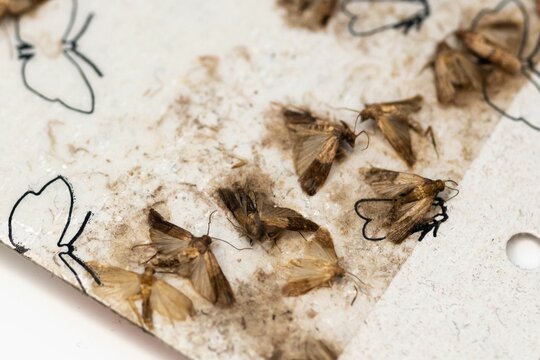
- After vacuuming, it’s crucial to maintain your vacuum to ensure it remains effective. Clean or replace the vacuum filter regularly to prevent any larvae or eggs from escaping back into your home. Once you finish vacuuming, immediately dispose of the vacuum bag or empty the canister outside to ensure any trapped pests don’t reinfest the area. Proper vacuum maintenance ensures that your efforts to remove Indian Meal Moths are successful and that the pantry remains pest-free.
8. Using Natural Deterrents In Removing The India Meal Moths
Bay Leaves and Cloves
Bay leaves and cloves are natural moth repellents that work effectively in preventing Indian Meal Moths from infesting your pantry. The strong scent of bay leaves is unpleasant to moths, discouraging them from laying eggs near stored food. Similarly, cloves emit a potent aroma that moths dislike. Placing a few bay leaves or whole cloves in your pantry, inside containers, or on shelves can create a protective barrier against moths. Replenish them periodically to maintain their effectiveness.
Neem Leaves
Neem leaves are another natural deterrent known for their pest-repellent properties. The strong, bitter scent of neem leaves drives away moths, larvae, and other pests. Placing neem leaves in your pantry or inside food storage containers helps prevent infestations and keeps food safe from contamination. Neem is safe, non-toxic, and effective, making it an ideal choice for organic pest control.
Essential Oils
Essential oils like lavender, eucalyptus, and tea tree oil are known for their ability to repel pests. These oils have strong fragrances that moths find unpleasant. To use them as a deterrent, dilute a few drops of essential oil in water and spray it lightly on pantry shelves or create sachets with cotton balls soaked in the oils. These natural oils not only deter moths but also leave your pantry smelling fresh.
9. Setting Up Non-Toxic Traps Methods
Pheromone Traps
Pheromone traps are an effective way to control Indian Meal Moths by targeting the male moths. These traps contain synthetic moth pheromones that attract male moths, which then become stuck in the trap. By trapping the males, these pheromone traps reduce the moth population and limit their ability to reproduce. Place pheromone traps near infested areas or where moth activity is highest, such as pantry shelves or near light sources. These traps help monitor moth presence and reduce the overall infestation.
DIY Traps
If you prefer a more natural, cost-effective solution, you can create your own moth traps using common household ingredients. A simple DIY trap can be made by combining vinegar, molasses, or honey in a small dish. The sweet scent will attract moths, and they will become trapped in the sticky substance. These homemade traps can be placed near areas where moth activity is noticeable, such as food storage spaces or kitchen countertops. Regularly check and replace the mixture to maintain its effectiveness.
Placement of Traps
For optimal results, place traps near light sources, as moths are naturally attracted to light. Additionally, positioning them in areas with high moth activity or near food storage areas can help capture a significant portion of the moth population, aiding in the control and prevention of future infestations.
10. Inspecting New Groceries
1. Careful Shopping
When shopping for pantry items, always inspect food packaging carefully before making a purchase. Look for any holes, tears, or signs of infestation such as webbing or moths inside the packaging. Even if the product appears to be sealed, check the seams and corners where pests may have entered. If you find any signs of contamination, choose a different product. Being cautious at the store can help you avoid bringing home infested food.
2. Storage Practices
Once you’ve purchased your dry goods, it’s crucial to store them properly to prevent infestations. Immediately transfer items like flour, grains, dried fruits, and nuts into airtight containers. This will not only protect your food from moths but also preserve its freshness. Airtight containers, such as glass or metal jars with tight-fitting lids, are the best choice for keeping pests out. Ensure your pantry is organized so that it’s easier to inspect and maintain your food storage.
3. Rotating Stock
To further reduce the risk of infestation, practice the “first in, first out” (FIFO) method by using older items first. This helps prevent food from sitting in your pantry for long periods, which can attract pests. Avoid overstocking, as excess food can create conditions conducive to moth infestations. Regularly check the condition of your pantry items to ensure they remain fresh and pest-free.
11. Using Natural Predators for Effective Indian Meal Moth Control
-
Parasitic Wasps (Trichogramma Wasps)
Trichogramma wasps are a natural, biological solution for controlling Indian Meal Moth infestations. These tiny, non-stinging wasps target and parasitize moth eggs, preventing them from hatching into larvae. By laying their eggs inside the moth eggs, the wasp larvae kill the moth eggs before they can develop into larvae. Trichogramma wasps are harmless to humans and pets, making them an eco-friendly pest control option. These wasps are a safe and effective way to disrupt the lifecycle of moths without relying on chemicals or traps.
-
Introducing Predators
To use Trichogramma wasps, release them into affected areas, such as your pantry or food storage spaces. The wasps will naturally seek out moth eggs and begin their parasitic activity. Ensure that you purchase Trichogramma wasps from a reputable supplier, as the correct species will target the Indian Meal Moth eggs specifically. Once released, these beneficial insects can help significantly reduce moth populations over time.
-
Safety and Monitoring
After introducing parasitic wasps, it’s important to leave the area undisturbed for a few weeks. Avoid cleaning or disturbing the pantry during this period, as it may interfere with the wasps’ ability to locate and parasitize the moth eggs. Regularly monitor the area to see if moth activity decreases, and enjoy a more natural, chemical-free pest control solution.
12. Using Vinegar and Essential Oils
1. Cleaning Surfaces
A simple and effective way to clean pantry surfaces and deter pests is by mixing equal parts of vinegar and water. This solution not only removes dirt, crumbs, and spills but also helps eliminate moth eggs and larvae. For an added layer of protection, you can add a few drops of essential oils like peppermint, lavender, or eucalyptus to the mixture. These oils have natural insect-repellent properties, making your pantry less appealing to pests.
2. DIY Repellent Spray
For an extra pest deterrent, create a DIY repellent spray by combining vinegar, water, and essential oils in a spray bottle. Lightly spray this solution on pantry walls, shelves, and storage containers. The strong scent of essential oils will help repel Indian Meal Moths and other insects. This spray is non-toxic and safe for use around food items when applied correctly.
3. Long-Term Effects
Using these natural solutions regularly not only helps clean but also creates an environment where pests are unlikely to thrive. The combination of vinegar and essential oils will continue to keep your pantry clean and moth-free over time, providing long-term, chemical-free pest control.
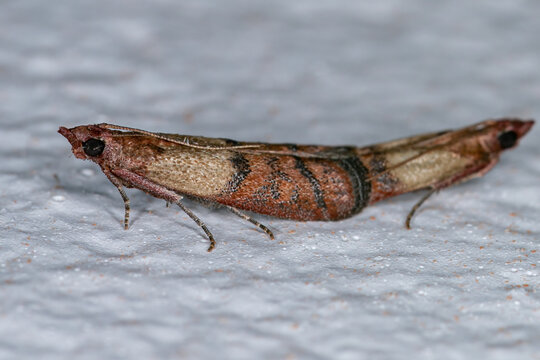
13. Regular Maintenance Practices
-
Cleaning Schedule
Establishing a regular cleaning routine is essential to keeping your pantry free from Indian Meal Moths and other pests. Wipe down shelves, containers, and pantry corners monthly with a natural cleaning solution, such as a vinegar and water mix. This will help remove any crumbs, food residue, or potential moth eggs. Keeping your pantry clean and tidy is a simple yet effective way to prevent infestations from occurring.
-
Food Rotation
Practice good food rotation by regularly checking expiration dates on items in your pantry. Always use older items first and avoid overstocking, as products that sit in storage for long periods are more likely to attract pests. This practice not only reduces the risk of infestations but also ensures that your food remains fresh and safe to consume. Regularly inspecting food packaging for signs of damage is another helpful step in managing pantry pests.
-
Monitor Activity
Even after following prevention methods, it’s important to continue monitoring for any signs of re-infestation. Use pheromone traps or DIY traps to periodically check for moth activity in your pantry. If you detect any signs of Indian Meal Moths, take immediate action to address the problem before it spreads. Regular monitoring ensures that your pantry remains pest-free in the long run.
14. When to Call a Professional
1. Severe Infestations
If natural methods fail to fully eliminate a significant infestation of Indian Meal Moths, it may be time to consult a pest control professional. While DIY methods can be effective for smaller issues, large or persistent infestations often require expert intervention to ensure the problem is thoroughly addressed. Pest control professionals have the tools and expertise to handle complex situations and provide long-lasting solutions.
2. What to Expect
When you hire a pest control professional, they will typically begin by assessing the extent of the infestation. They will use targeted treatments that may include chemical or non-chemical options based on the severity of the problem. These treatments are often more effective than DIY methods and can provide quicker, more comprehensive results. Professionals may also use advanced techniques, such as fumigation or heat treatments, to eliminate moths at all stages of their lifecycle, including eggs and larvae.
3. Long-Term Solutions
A professional pest control service will not only address the current infestation but also provide long-term solutions. They will advise on preventive measures, such as sealing potential entry points, improving storage practices, and setting up a regular inspection schedule to ensure moths don’t return. With their help, you can keep your pantry pest-free for the long term.
Conclusion: Effectively Eliminating Indian Meal Moths
Indian Meal Moths can be a persistent nuisance, but with the right knowledge and natural methods, you can tackle the problem effectively. These pests are commonly found in food storage areas, but by using a combination of preventive steps and proactive control measures, you can create a safe, pest-free environment in your home.
The 14 steps outlined in this guide offer a comprehensive approach to eliminating Indian Meal Moths. From identifying the signs of an infestation to utilizing natural cleaning solutions, pheromone traps, and biological control methods, you have many tools at your disposal. Each step helps break the moths’ lifecycle and reduces the risk of re-infestation, ensuring your pantry remains safe.
Consistency is key when it comes to preventing infestations. Regularly cleaning your pantry, practicing food rotation, and sealing entry points will go a long way in keeping moths out. Additionally, by staying vigilant and monitoring for signs of new moth activity, you can catch potential issues early before they turn into significant problems.
By following these steps, you can eliminate Indian Meal Moths and maintain a clean, pest-free environment, ensuring peace of mind for you and your family.



